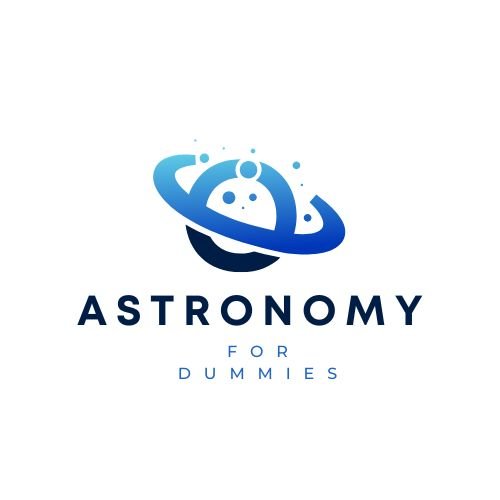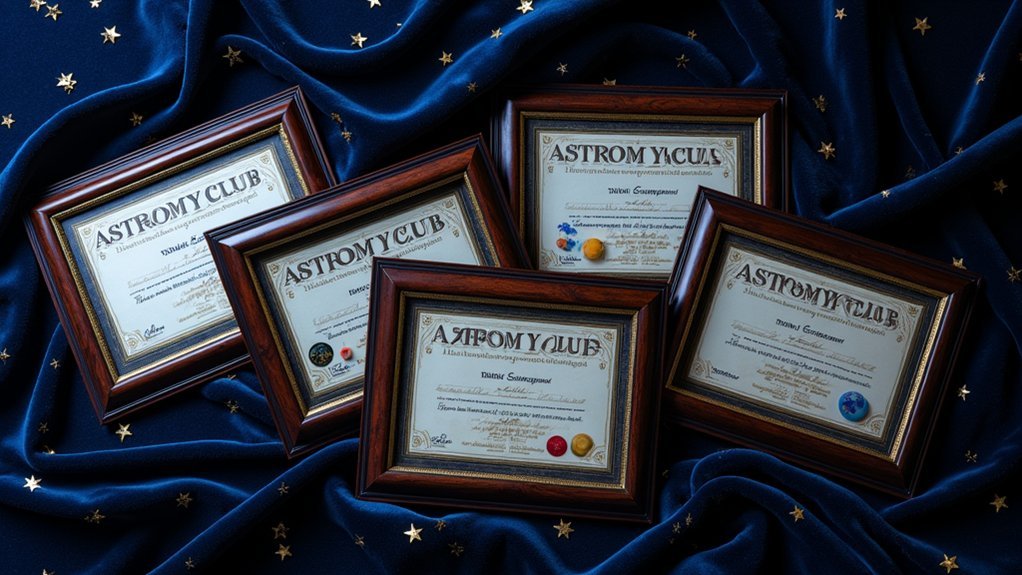The core laws of orbital motion include Kepler’s three laws and Newton’s law of universal gravitation. Kepler established that planets follow elliptical orbits with the Sun at one focus, sweep equal areas in equal times, and have orbital periods related to their distance (P²/d³ = constant). Newton explained these phenomena with his gravitational theory (F = G(m₁m₂)/r²), showing why planets accelerate in their orbits. These principles guide everything from satellite deployments to the discovery of exoplanets beyond our solar system.
Numeric List of 9 Second-Level Headings

To properly structure our exploration of orbital motion laws, we’ve organized this article into nine critical sections.
These sections will guide you through the fundamental principles that govern how objects orbit in space.
The headings include:
1) Kepler’s First Law: The Law of Elliptical Orbits,
2) Kepler’s Second Law: The Law of Equal Areas,
3) Kepler’s Third Law: The Harmonic Law,
4) Newton’s Law of Universal Gravitation,
5) Conservation of Angular Momentum,
6) Orbital Energy Principles,
7) Escape Velocity Calculations,
8) Orbital Perturbations and Stability, and
9) Practical Applications in Space Exploration.
Each section builds upon the previous, creating a thorough understanding of orbital mechanics from historical discoveries to modern applications.
The Historical Development of Kepler’s Orbital Laws
Before Kepler’s revolutionary insights, you’d find astronomers stubbornly clinging to Aristotelian and Ptolemaic models that insisted on perfect circular orbits for celestial bodies.
You’ll notice this circular tradition persisted even in Copernicus’s heliocentric model, which still relied on complex arrangements of circles to explain planetary motion.
Kepler’s analysis of Tycho Brahe’s precise observational data led him to break with these circular traditions, establishing that planets actually follow elliptical paths with the Sun at one focus.
Pre-Keplerian Orbit Models
While we take elliptical orbits for granted today, understanding planetary motion required centuries of intellectual evolution before Kepler’s breakthrough.
The geocentric model, formalized by Ptolemy around 150 C.E., placed Earth at the universe’s center and explained planetary movements using complex circular orbits and epicycles. This view dominated astronomy until 1543, when Copernicus introduced his heliocentric system in *De revolutionibus*.
By positioning the Sun centrally, Copernicus simplified our understanding of planetary motion but still clung to circular orbits, preventing his model from achieving perfect accuracy.
The shift to Kepler’s laws of planetary motion began with Tycho Brahe’s meticulous observations in the late 16th century. These precise measurements provided the empirical evidence Kepler needed to break from tradition and discover the true elliptical nature of orbits.
Breaking Circular Traditions
Although nearly two millennia of astronomical tradition had established perfect circles as the only acceptable path for celestial bodies, Johannes Kepler shattered this deeply entrenched belief in the early 17th century.
By formulating three revolutionary laws of planetary motion, Kepler demonstrated that planets actually follow elliptical orbits with the Sun at one focus.
His first law, published in 1609, revealed Earth’s orbit has an eccentricity of approximately 0.015.
His second law established that planets move faster when closer to the Sun, as radius vectors sweep equal areas in equal times.
In 1618, Kepler completed his trio with the mathematical relationship P²/d³ = constant.
These insights marked a definitive break from Ptolemaic circular traditions and provided the foundation Newton would later use to develop his laws of motion and gravitation.
Understanding Elliptical Orbits: Kepler’s First Law

You’ll notice that planets don’t follow perfect circles as they orbit the Sun, but instead travel in elliptical paths with the Sun positioned at one focal point of the ellipse.
This elliptical motion, defined by two focal points where the sum of distances to any point on the orbit remains constant, varies in its eccentricity—Earth’s nearly circular orbit has an eccentricity of just 0.0167, while other celestial bodies follow more elongated paths.
The Sun’s gravitational pull creates these elliptical orbits, demonstrating how mass influences space and establishes the foundation for understanding why planets move as they do.
Ellipses and Focal Points
Prior to Kepler’s revolutionary discoveries, astronomers clung to the idea that planets moved in perfect circles, an elegant but ultimately flawed concept. Kepler revealed that planetary orbits are actually ellipses with the Sun positioned at one focus.
When you examine ellipses, you’ll notice they’re defined by two foci. Any point on the ellipse maintains a constant sum of distances to these two points. The eccentricity of an orbit tells you how much it deviates from circular, with Earth’s eccentricity being a mere 0.0167.
| Orbital Property | Description | Example | Significance |
|---|---|---|---|
| Eccentricity | Deviation from circular shape | Earth: 0.0167 | Determines orbit shape |
| Semi-major axis | Half of longest diameter | Defines orbit size | Used in orbital period |
| Perihelion | Closest approach to Sun | Planet moves fastest | Maximum solar influence |
| Aphelion | Farthest from Sun | Planet moves slowest | Minimum solar influence |
Orbital Eccentricity Explained
Orbital eccentricity forms the mathematical backbone of Kepler’s First Law, giving us precise language to describe the elliptical shapes we’ve just examined. This value, ranging from 0 to 1, quantifies how much an orbit deviates from a perfect circle.
You can calculate eccentricity using the formula ε = (r_max – r_min) / (r_max + r_min), where r_max and r_min represent the maximum and minimum distances from the focal point.
Earth’s orbit barely deviates from circular with an eccentricity of just 0.0167, while comets often approach 1 with their highly elongated paths.
The practical impact? A planet’s orbital eccentricity directly affects its speed and distance from the Sun throughout its journey, creating the predictable patterns that Kepler’s First Law so elegantly describes.
Sun’s Gravitational Influence
At the heart of every elliptical orbit lies the Sun’s immense gravitational influence, which acts as the cosmic puppeteer for our entire solar system.
When you understand Kepler’s First Law, you’ll see how the Sun’s gravitational force shapes planetary paths. Unlike the perfect circles once imagined, planets follow elliptical orbits with the Sun positioned at one focus.
- Earth’s orbit has low eccentricity (0.0167), making it nearly circular
- The Sun’s position at one focus creates varying distances throughout a planet’s orbit
- At perihelion, planets move faster due to stronger gravitational pull
- At aphelion, planets slow down as they travel farther from the Sun
This gravitational relationship revolutionized our understanding of celestial mechanics, replacing Ptolemaic models.
This fundamental principle demonstrates how gravity orchestrates the cosmic dance of planets around our star.
Orbital Speed Variations: The Equal Area Principle

When we observe planets traversing their elliptical paths around the Sun, we’ll notice they don’t maintain constant speeds throughout their orbits. This phenomenon is explained by Kepler’s Second Law, also known as the Equal Area Principle.
As planets move closer to the Sun at perihelion, their orbital speed increases due to stronger gravitational pull. Conversely, they slow down at aphelion when farther away.
Earth, for instance, travels at nearly 30 km/s at its closest approach but slows to about 24 km/s at its farthest point.
Earth’s orbital velocity fluctuates significantly, reaching 30 km/s at perihelion while dropping to just 24 km/s at aphelion.
This principle works because a line connecting a planet to the Sun sweeps out equal areas in equal time intervals. It’s governed by the conservation of angular momentum—as distance changes, the product of velocity and distance remains constant.
This law applies universally to all celestial bodies in orbit.
The Mathematical Relationship Between Distance and Time
While the equal area principle explains how a planet’s speed varies throughout its orbit, another fundamental relationship governs the broader pattern of celestial motion.
Kepler’s Third Law establishes that a planet’s orbital period and its mean distance from the Sun are mathematically linked by the ratio P²/d³ = constant.
You’ll find this relationship applies universally throughout our solar system:
- Earth, at 1 AU from the Sun, completes its orbit in exactly 1 year
- Mars, at 1.52 AU, takes 1.88 years to orbit
- A planet’s mean motion (2π/T) decreases as distance increases
- The P²/d³ relationship works for satellites orbiting any central body
- You can predict unknown orbital periods if you know the distance (or vice versa)
This mathematical precision allows astronomers to calculate orbits for any object in space.
Gravitational Influences on Planetary Motion
Newton’s law of universal gravitation provides the fundamental explanation for Kepler’s empirical laws of planetary motion. When you observe planetary orbits, you’re seeing the direct result of gravitational influences that vary with distance from the Sun. The force follows an inverse-square relationship, meaning planets experience stronger gravitational pull when closer to the Sun.
This varying force explains why planets move faster at perihelion and slower at aphelion. Kepler’s Second Law—that equal areas are swept in equal times—directly results from conservation of angular momentum under these gravitational influences.
The relationship between orbital period and distance in Kepler’s Third Law (P² ∝ d³) demonstrates how a planet’s year lengthens as its average distance from the Sun increases, all governed by the mathematical certainty of gravitational attraction.
Practical Applications of Orbital Mechanics
Although Kepler’s laws originated from astronomical observations, they’ve proven remarkably useful in numerous practical applications.
Although conceived for the heavens, Kepler’s laws unlock practical solutions throughout our modern world.
When you understand these fundamental principles of orbital mechanics, you’ll see their influence across various fields:
- Navigation systems became 100 times more accurate during the Age of Exploration by applying Kepler’s precise celestial calculations.
- Astronomers discovered Uranus, Neptune, and Pluto by analyzing orbital deviations predicted by Kepler’s laws.
- Satellite orbits for communications, GPS, and the International Space Station rely on these principles to maintain stability and avoid collisions.
- Space agencies use Kepler’s laws to plan interplanetary missions and execute complex gravitational maneuvers.
- Scientists identify potentially habitable exoplanets by applying Kepler’s Third Law to determine orbital periods based on stellar distance.
Measuring and Calculating Orbital Eccentricity
One of the most revealing characteristics of any orbit is its eccentricity—a single value that tells you how much an orbit deviates from a perfect circle. You can calculate orbital eccentricity using a straightforward formula: ε = (r_max – r_min) / (r_max + r_min), where r_max and r_min represent the maximum and minimum distances from the central body.
A perfect circle has an eccentricity of 0, while elliptical orbits range between 0 and 1. Earth’s orbit is nearly circular with an eccentricity of just 0.0167, whereas Mercury’s more elongated path measures 0.2056.
When calculating eccentricity, you’re quantifying how an object’s speed and distance vary throughout its orbit—higher eccentricity means greater variations. This measurement helps explain seasonal changes on planets as their distance from their star fluctuates.
Newton’s Contribution to Orbital Motion Theory
When Sir Isaac Newton published his groundbreaking work in 1687, he forever transformed our understanding of celestial mechanics. His insights connected the mysterious movements of celestial bodies with the same forces that govern objects on Earth.
Newton’s revolutionary contributions include:
- Formulating the law of universal gravitation (F = G(m₁m₂)/r²) that explains the attractive force between all masses
- Demonstrating how his three laws of motion, especially F = ma, explain planetary acceleration toward the Sun
- Mathematically proving that Kepler’s laws of planetary motion derive directly from his gravitational theory
- Applying calculus to predict planetary positions with unprecedented accuracy
- Unifying terrestrial and celestial physics under one coherent framework
You’ll find that Newton’s work remains foundational to modern orbital mechanics, elegantly explaining why planets follow elliptical paths around the Sun.
Frequently Asked Questions
What Is the Law of Orbitals?
The law of orbitals states that planets move in elliptical paths with the Sun at one focus. You’ll notice this replaces the old circular orbit theory and helps you calculate orbital mechanics precisely.
What Is the First Law of Orbital Motion?
Kepler’s First Law states that you’ll find planets moving in elliptical orbits with the Sun at one focus. It’s a groundbreaking principle that replaced the long-held belief in perfect circular planetary paths.
What Are the Basics of Orbital Mechanics?
Orbital mechanics basics involve elliptical paths, varying speeds, and mathematical relationships between orbits. You’ll find that objects move faster when closer to their central body due to stronger gravitational attraction.
What Is the Second Law of Orbit?
Kepler’s Second Law states that you’ll see a planet sweep out equal areas in equal times. When it’s closer to the Sun, it’ll move faster; when it’s farther away, it’ll move slower.
In Summary
You’ve now explored the core laws that govern orbital motion, from Kepler’s initial discoveries to Newton’s gravitational theory. You’ll find these principles at work everywhere from satellite deployments to space exploration missions. Whether you’re calculating orbital periods or predicting planetary positions, these mathematical relationships remain unchanged. Remember that these fundamental laws connect the cosmic dance of celestial bodies with the practical science of modern space technology.





Leave a Reply